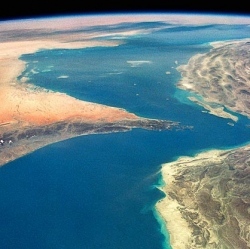
Next Tuesday, Orbital ATK will launch their Cygnus cargo vehicle to the International Space Station. Cygnus will bring the astronauts supplies such as food, water, and a 3D printer. Normally, after supplies are unloaded from Cygnus, the crew would fill the cargo ship with trash and send it back to Earth to burn up in the atmosphere.
This time, before Cygnus breaks apart above the Earth, NASA is going to intentionally set it on fire, well, part of it anyway. In order to study how fire reacts in a weightless environment, NASA is performing the Spacecraft Fire Experiment, or “Saffire.” Up until now, only very small combustion tests have been conducted aboard the space shuttle and the ISS due to risks associated with such experiments.
Saffire will allow NASA scientists to study how microgravity fires react on a much larger scale. After Cygnus leaves the ISS and begins its return to Earth, engineers from NASA’s Glenn Research Center will remotely ignite a large swath of cloth contained in a 3-by-3-by-5 foot module inside Cygnus.
The 16 by 37-inch cloth is made out of fiberglass and cotton, a material blend that’s been included in previous, smaller microgravity combustion experiments. Sensors and high definition video cameras inside Cygnus will record the characteristics of the flame propagation along the cloth. The experiment is expected to take a few hours to complete.
Once the experiment is over, Cygnus will remain in orbit for 7 days in order to downlink the data to ground stations around the world. After the Saffire team has retrieved the data, Cygnus will begin its reentry and burn up in the atmosphere over the Pacific Ocean.
“A spacecraft fire is one of the greatest crew safety concerns for NASA and the international space exploration community.” Gary Ruff, Saffire project manager. Fire in space has always been a critical safety issue for NASA and their astronauts who live in the confined, oxygen-rich environments of spacecraft and the ISS.
For NASA, the issue was brought to the forefront with the Apollo 1 tragedy, where 3 astronauts were killed due to a cabin fire during a launch rehearsal. Apollo 1 highlighted NASA’s poor emergency preparedness and various fire hazards inside the Apollo module at the time.
Experiencing such a devastating fire-related disaster made NASA especially sensitive to fire hazards on future missions. For example, NASA initially chose to bring pencils on early spaceflights. But pencil tips can break off, creating little fire hazards throughout a spacecraft filled with oxygen and electrical equipment. In order to avoid possibly causing a short in an electrical device, NASA switched from pencils to specialized pens that would work in a microgravity environment.
Luckily, after Apollo 1, NASA hasn’t been presented with other similar fire-related disasters from which to learn. But small scale experiments performed under microgravity conditions have shown that fire does burn differently under weightless conditions. Among other differences, microgravity flames are spherical, rather than tear-drop shaped.
In a NASA press release, David Urban Saffire’s principal investigator stated, “Saffire seeks to answer two questions. Will an upward spreading flame continue to grow or will microgravity limit the size? Secondly, what fabrics and materials will catch fire and how will they burn?”
Next week’s module is the first of 3 initial Saffire experiments. Saffire II will launch in June and will ignite a mix of 9 different materials commonly used on the ISS, including materials used for astronaut clothing. Saffire III will be very similar to Saffire I.
“Saffire is all about gaining a better understanding of how fire behaves in space so NASA can develop better materials, technologies and procedures to reduce crew risk and increase space flight safety.” Gary Ruff, Saffire project manager
